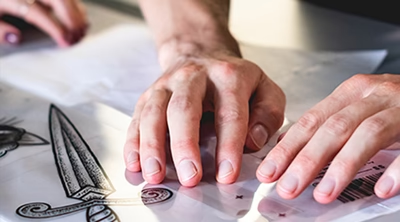The Ultimate Guide to Printing Screen Emulsion: Everything You Need to Know
When it comes to screen printing, one of the most essential materials you'll need is screen printing emulsion. Whether you're a beginner or a seasoned pro, understanding the role of emulsion in the screen printing process is crucial for achieving high-quality, crisp designs every time. In this guide, we’ll walk you through what screen emulsion is, how it works, and why it’s so important. We’ll also introduce you to some top-quality options available online.
What is Screen Printing Emulsion?
Screen printing emulsion is a light-sensitive material that is coated onto a screen to create stencils for the printing process. The emulsion hardens when exposed to light, and the areas of the screen that are not exposed to light will remain soft and wash away, leaving behind a negative of your design. This negative image allows ink to pass through the open areas of the screen, transferring your design to the material you're printing on, whether it’s t-shirts, posters, or other items.
Types of Screen Printing Emulsion
There are a few types of screen printing emulsions available on the market, and the right one for you depends on the type of work you do:
-
Photopolymer Emulsion: This is the most common type of emulsion used in screen printing. It is durable, easy to use, and ideal for both beginners and professionals. Photopolymer emulsions are sensitive to UV light, making them great for creating highly detailed prints.
-
Diazo Emulsion: Typically used for larger runs and when you need more durability. It requires a sensitizer to be mixed with the emulsion before use.
-
Dual-Cure Emulsion: Combining the best of both photopolymer and diazo, this emulsion offers the versatility of both types and is perfect for high-detail and long-lasting prints.
How to Use Screen Printing Emulsion
Using screen printing emulsion can seem daunting at first, but once you understand the process, it’s pretty straightforward. Here are the basic steps:
-
Coat the Screen: Apply a thin, even layer of emulsion onto your screen using a scoop coater. Make sure you coat both sides of the screen and allow the emulsion to dry in a dark room to prevent exposure to light.
-
Expose the Screen: Once the emulsion is dry, place your design (printed on a transparent film) onto the screen and expose it to UV light. The light will harden the emulsion, except in the areas where your design blocks the light.
-
Wash Out the Screen: After exposure, rinse the screen with water. The unexposed emulsion will wash away, leaving behind your design. Allow the screen to dry before beginning the printing process.
-
Printing: With the screen prepared, you’re ready to start printing! Simply place your screen on your printing surface, add ink, and use a squeegee to push the ink through the screen.
Why Screen Printing Emulsion is Important
The quality of your emulsion directly affects the final product. If the emulsion isn’t properly applied or exposed, you might experience issues like blurry prints or poor ink flow. Therefore, choosing the right screen printing emulsion for your specific needs is critical.
If you’re looking for top-quality, reliable emulsion for your screen printing projects, be sure to check out Screen Print Direct's collection of screen printing emulsions. They offer a variety of emulsions designed to suit different printing needs, whether you’re printing on fabric, paper, or other surfaces.
Conclusion
Screen printing emulsion is a fundamental component of the screen printing process. Understanding its different types and how to use it properly can significantly enhance the quality of your prints. Whether you're printing in small batches or running large orders, having the right emulsion ensures your designs come out sharp, clear, and long-lasting. So, don’t skimp on quality, and be sure to choose the best emulsion for your screen printing needs.
For top-notch emulsions, check out Screen Print Direct's selection and take your screen printing game to the next level!
.jpg)
.webp)


Comments
Post a Comment